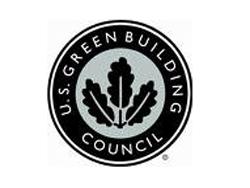NYC Office Receives LEED Silver Status
LEED is the USGBC’s system for designing and constructing the world’s most environmentally efficient buildings. OEM’s office is the first city agency headquarters – and one of only nine buildings citywide – to earn silver certification.
OEM’s headquarters, which opened last fall, was designed to achieve LEED certification for site selection, water and energy efficiency, material use, and a variety of other environmental measurements.
“OEM is engaged in environmental issues year round -- air quality, water and energy conservation, climate issues, debris management – these are areas of strong familiarity to us,” said OEM Commissioner Joseph Bruno.
“Given these concerns, we felt a responsibility to create a building that was healthier for our staff, healthier for the environment, and could serve as a leading example for other city agencies.”
Also, 20% of the materials in the building were manufactured locally and 50% of construction waste was diverted from landfills.
Building materials included low emissions compounds such as paint, furniture, adhesives, and carpet. OEM has also installed high efficiency air filters and CO monitors to track the quantity of fresh air.
The facility has dedicated exhaust for janitors’ closets and printer areas.
T
.
